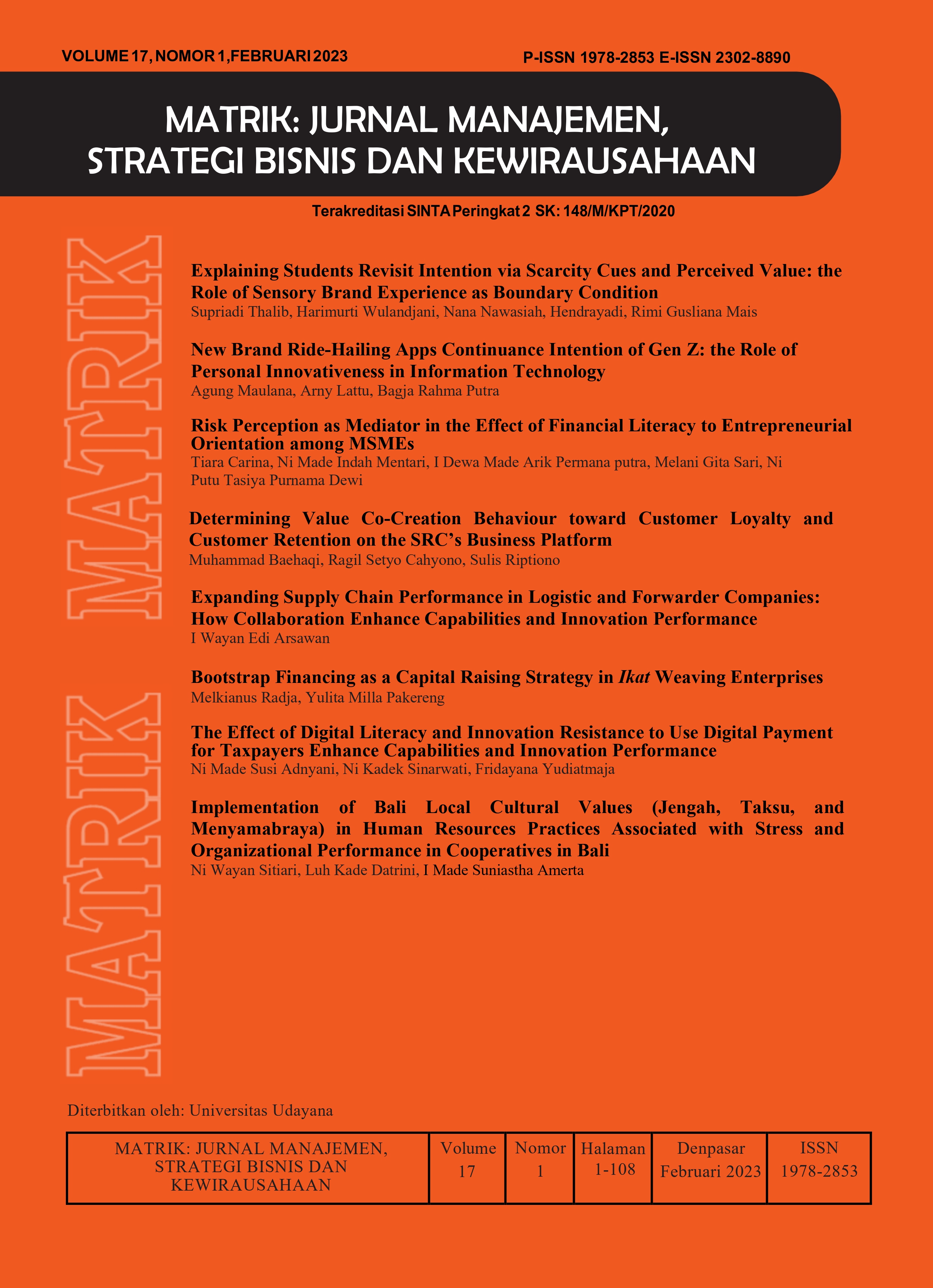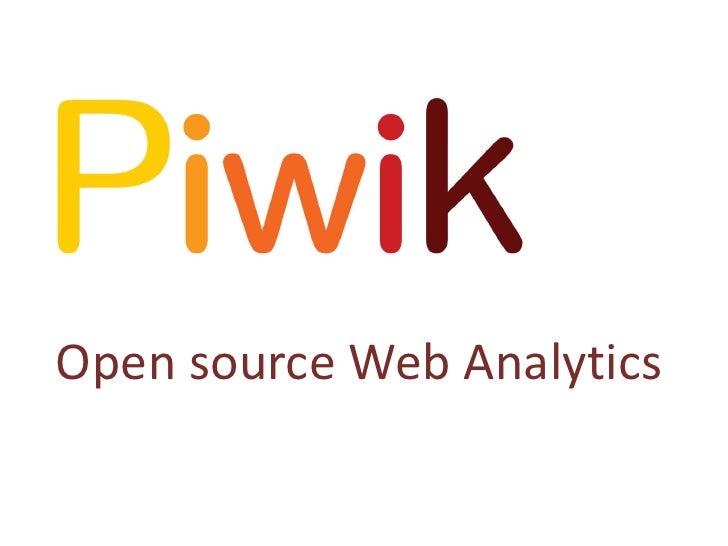New Brand Ride-Hailing Apps Continuance Intention of Gen Z: the Role of Personal Innovativeness in Information Technology
Abstract
The tight competition in the ride-hailing service industry has made Super App digital companies in Indonesia vie to attract public interest to become their regular customers. As new players, Super App Maxim and/or InDriver companies need insight into what factors can make their applications accepted by Generation Z as the largest consumers in Indonesia. So, this study aims to investigate the role of performance and expectations of effort and social influence on continuing intentions to use new online transportation applications through the mediating role of personal innovation in information technology (PIIT). This study used the SEM technique with the SMART PLS 3.3.0 application, with 553 respondents using Maxim and/or InDriver. The study results show that performance, effort expectations, and social influence significantly affect the intention to use online transportation applications. Expected effort is the most significant factor affecting PIIT and intention to continue, followed by social influence and performance expectations.
Keywords: Continuance Intentions; Generation Z; Personal Innovativeness In Information Technology; Ride-Hailing Apps, UTAUT
Downloads
References
Alananto, D., & Wahyudi, T. (2021). Determinants of Consumer Preference on Ride-Hailing Platforms in South-East Asia JMSAB 199. 4(1), 207–216. https://doi.org/10.36407/jmsab.v4i1.380
Almunawar, M. N., Anshari, M., & Ariff Lim, S. (2020). Customer acceptance of ride-hailing in Indonesia. Journal of Science and Technology Policy Management, 12(3), 443–462. https://doi.org/10.1108/JSTPM-09-2019-0082
Amoroso, D. L., & Chen, Y. (2017). Constructs Affecting Continuance intention in consumers with mobile financial apps: a dual factor approach. Journal of Information Technology Management, 28(3), 1–24.
Bomey, N. (2016, December 19). Millennials spurn driver’s licenses, study finds. USA TODAY .https://www.usatoday.com/story/money/cars/2016/01/19/drivers-licenses-uber-lyft/78994526/
Chauhan, H., Pandey, A., Mishra, S., & Rai, S. (2021). Modeling the predictors of consumers’ online purchase intention of green products: the role of personal innovativeness and environmental drive. Environment, Development and Sustainability, 23(11), 16769–16785. https://doi.org/10.1007/s10668-021-01337-9
Chen, C.-C., Liao, C.-C., Chen, H.-H., Wang, H.-W. M., & Zhuo, W.-X. (2019). The Effect of Personal Innovativeness on Mobile Payment to Behavioral Intentions Perceived Enjoyment as a Moderator. 2019 IEEE International Conference on Consumer Electronics - Taiwan (ICCE-TW), 1–2. https://doi.org/10.1109/ICCE-TW46550.2019.8992013
Chopdar, P., & Sivakumar, V. J. (2019). Understanding continuance usage of mobile shopping applications in India: the role of espoused cultural values and perceived risk. Behaviour & Information Technology, 38(1), 42–64. https://doi.org/10.1080/0144929X.2018.1513563
Davis, S., & Neves, N. (2021). e-Conomy SEA 2021: Roaring 20s — The SEA Digital Decade. https://www.thinkwithgoogle.com/intl/en-apac/consumer-insights/consumer-trends/e-conomy-sea-2021/
Fauzi, A. A. (2018). Electronic Service Quality On Mobile Application Of Online Transportation Services. 13–27.
Fauzi, A. A., & Sheng, M. L. (2021). Ride-hailing apps’ continuance intention among different consumer groups in Indonesia: the role of personal innovativeness and perceived utilitarian and hedonic value. Asia Pacific Journal of Marketing and Logistics, 33(5), 1195–1219. https://doi.org/10.1108/APJML-05-2019-0332
Froehlich, N. (2022, January 12). Understanding The Differences In Mobile App Use Across Generations. Forbes. https://www.forbes.com/sites/forbestechcouncil/2022/01/12/understanding-the-differences-in-mobile-app-use-across-generations/?sh=67e488651d18
Ghalandari, K. (2012). The Effect of Performance Expectancy, Effort Expectancy, Social Influence and Facilitating Conditions on Acceptance of E-Banking Services in Iran: the Moderating Role of Age and Gender. Middle-East Journal of Scientific Research, 12(6), 801–807. https://doi.org/10.5829/idosi.mejsr.2012.12.6.2536
Gozali, I. (2018). Aplikasi analisis multivariate dengan program IBM SPSS 25 (9th ed.). Badan Penerbit Universitas Diponegoro.
Hair, J. F., Matthews, L. M., Matthews, R. L., & Sarstedt, M. (2017). PLS-SEM or CB-SEM: updated guidelines on which method to use “PLS-SEM or CB-SEM: updated guidelines on which method to use.” In Organizational Research Methods, MIS Quarterly, and International Journal (Vol. 1, Issue 2).
Hair, J. F., Risher, J. J., Sarstedt, M., & Ringle, C. M. (2018). The Result pf PLS-SEM. Eur.Bus.Rev, 31(1), 2–24.
Hair, J., Hollingsworth, C. L., Randolph, A. B., & Chong, A. Y. L. (2017). An updated and expanded assessment of PLS-SEM in information systems research. Industrial Management and Data Systems, 117(3), 442–458. https://doi.org/10.1108/IMDS-04-2016-0130
He, F., & Shen, Z.-J. M. (2015). Modeling taxi services with smartphone-based e-hailing applications. Transportation Research Part C: Emerging Technologies, 58, 93–106. https://doi.org/https://doi.org/10.1016/j.trc.2015.06.023
Henseler, J., Dijkstra, T. K., Sarstedt, M., Ringle, C. M., Diamantopoulos, A., Straub, D. W., Ketchen, D. J., Hair, J. F., Hult, G. T. M., & Calantone, R. J. (2014). Common Beliefs and Reality About PLS: Comments on Rönkkö and Evermann (2013). Organizational Research Methods, 17(2), 182–209. https://doi.org/10.1177/1094428114526928
Henseler, J., Ringle, C. M., & Sinkovics, R. R. (2009). The use of partial least squares path modeling in international marketing. Advances in International Marketing, 20, 277–319. https://doi.org/10.1108/S1474-7979(2009)0000020014
Hwang, Y. (2014). User experience and personal innovativeness: An empirical study on the Enterprise Resource Planning systems. Computers in Human Behavior, 34, 227–234. https://doi.org/10.1016/j.chb.2014.02.002
Indrawati, & Putri, D. (2018a). Analyzing factors influencing continuance intention of E-payment adoption using modified UTAUT 2 Model: (A case study of Go-Pay from Indonesia). 2018 6th International Conference on Information and Communication Technology, ICoICT 2018, 167–173. https://doi.org/10.1109/ICoICT.2018.8528748
Jackson, J. D., Yi, M. Y., & Park, J. S. (2013). An empirical test of three mediation models for the relationship between personal innovativeness and user acceptance of technology. Information and Management, 50(4), 154–161. https://doi.org/10.1016/j.im.2013.02.006
Kordina, L., Hayuhardhika, W., & Herlambang, A. (2019). Evaluasi Keadaan Continuance Intention to Use dan Citizen Support pada Implementasi Layanan Website Pusat Pelayanan Pengaduan Masyarakat (P3M) Kabupaten Sidoarjo. Jurnal Pengembangan Teknologi Informasi Dan Ilmu Komputer, 3(5), 2548–2964. http://j-ptiik.ub.ac.id
Loureiro, S. M. C., Cavallero, L., & Miranda, F. J. (2018). Fashion brands on retail websites: Customer performance expectancy and e-word-of-mouth. Journal of Retailing and Consumer Services, 41, 131–141. https://doi.org/10.1016/j.jretconser.2017.12.005
Lu, J. (2014). Are personal innovativeness and social influence critical to continue with mobile commerce? Internet Research, 24(2), 134–159. https://doi.org/10.1108/IntR-05-2012-0100
Onaolapo, S. A., & Oyewole, O. K. (2018). Performance Expectancy, Effort Expectancy, and Facilitating Conditions as Factors Influencing Smart Phones Use for Mobile Learning by Postgraduate Students of the University of Ibadan, Nigeria. Interdisciplinary Journal of E-Skills and Lifelong Learning, 14, 95–115.
Palau-Saumell, R., Forgas-Coll, S., Sánchez-García, J., & Robres, E. (2019a). User Acceptance of Mobile Apps for Restaurants: An Expanded and Extended UTAUT-2. Sustainability, 11(4), 1210. https://doi.org/10.3390/su11041210
Pham, A., Dacosta, I., Jacot-Guillarmod, B., Huguenin, K., Hajar, T., Tramèr, F., Gligor, V., & Hubaux, J.-P. (2017). Proceedings on Privacy Enhancing Technologies ; ():1-19 PrivateRide: A Privacy-Enhanced Ride-Hailing Service. Proceeding on Privacy Enhancing Technologies, 1–19.
Rahi, S., Mansour, M. M. O., Alghizzawi, M., & Alnaser, F. M. (2019). Integration of UTAUT model in internet banking adoption context The mediating role of performance expectancy and effort expectancy. Journal of Research in In, 13(3), 411–435. https://doi.org/10.1108/JRIM-02-2018-0032
Roh, M., & Park, K. (2019). Adoption of O2O food delivery services in South Korea: The moderating role of moral obligation in meal preparation. International Journal of Information Management, 47, 262–273. https://doi.org/https://doi.org/10.1016/j.ijinfomgt.2018.09.017
Sair, S., & Danish, R. (2018). Effect of Performance Expectancy and Effort Expectancy on the Mobile Commerce Adoption Intention through Personal Innovativeness among Pakistani Consumers. Pakistan Journal of Commerce and Social Sciences, 12(2), 501–520.
Salim, I., Ricardo, R., MZ, S. B., & Marisa, T. (2021). Faktor Yang Mempengaruhi Kepuasan Pelanggan Dalam Layanan Ride Hailing Di Indonesia. Jurnal Aplikasi Bisnis Dan Manajemen. https://doi.org/10.17358/jabm.7.1.135
Setyaningsih, E., Ismawan, E., & HIdayat, T. (2019). Analisa Tingkat Kepuasan Pelanggan Transportasi Online Maxim di Balikpapan. Jurnal Sistem Informasi, 3(1).
Simarmata, M. T. A., & Jaya Hia, I. (2020). The Role Of Personal Innovativeness On Behavioral Intention Of Information Technology. Journal of Economics and Business, 01(02), 18–29.
Tam, C., Santos, D., & Oliveira, T. (2020). Exploring the influential factors of continuance intention to use mobile Apps: Extending the expectation confirmation model. Information Systems Frontiers, 22(1), 243–257. https://doi.org/10.1007/s10796-018-9864-5
Thakur, R., & Srivastava, M. (2014). Adoption readiness, personal innovativeness, perceived risk and usage intention across customer groups for mobile payment services in India. Internet Research, 24(3), 369–392. https://doi.org/10.1108/IntR-12-2012-0244
Venkatesh, V., & Smith, R. (2003). User Acceptance Of Information Technology: Toward a Unified View. MIS Quarterly, 27(3), 425–478.
Verkijika, S. F. (2018). Factors influencing the adoption of mobile commerce applications in Cameroon. Telematics and Informatics, 35(6), 1665–1674. https://doi.org/10.1016/j.tele.2018.04.012
Yusra, & Agus, A. (2020). The influence of online food delivery service quality on customer satisfaction and customer loyalty: The role of personal innovativeness. Journal of Environmental Treatment Techniques, 8(1), 6–12.
Yusra, Y., & Agus, A. (2019). The Influence of Online Food Delivery Service Quality on Costumer Satisfaction and Customer Loyalty: The Role of Personal Innovativeness. Journal of Environmental Treatment Techniques, 8(1), 6–12. https://www.researchgate.net/publication/339551642
 This work is licensed under a Creative Commons Attribution-ShareAlike 4.0 International License.
This work is licensed under a Creative Commons Attribution-ShareAlike 4.0 International License.



















